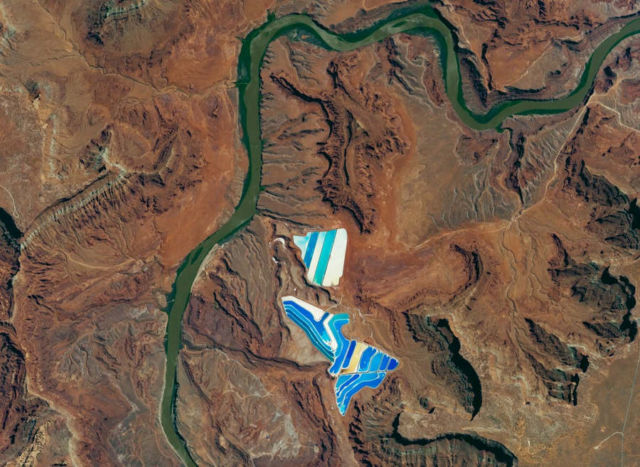A photograph from the International Space Station of solar evaporation ponds outside the city of Moab, Utah.
There are 23 colorful ponds spread across 400 acres. They are part of a large operation to mine potassium chloride—more commonly referred to as muriate of potash (MOP)—from ore buried underground. MOP is in high demand as fertilizer because there are no easy substitutes for potassium, an essential nutrient for plant growth.
Each pond color indicates a different state of evaporation. The deep, royal blue color is due to a dye that is added to a full pond of potash brine and water in order to speed up the rate of heat absorption. The seafoam green colors indicate shallower waters (with less dye) that are well into the evaporation process. The tan colored ponds are nearly dry; salt crystals (the final product) are left over in the pond and ready for collection.
Astronaut photograph ISS052-E-8757 was acquired on June 26, 2017, with a Nikon D4 digital camera using an 1150 millimeter lens.
Image Credit: NASA
Caption: Andi Hollier, Hx5, JETS Contract at NASA-JSC






Leave A Comment